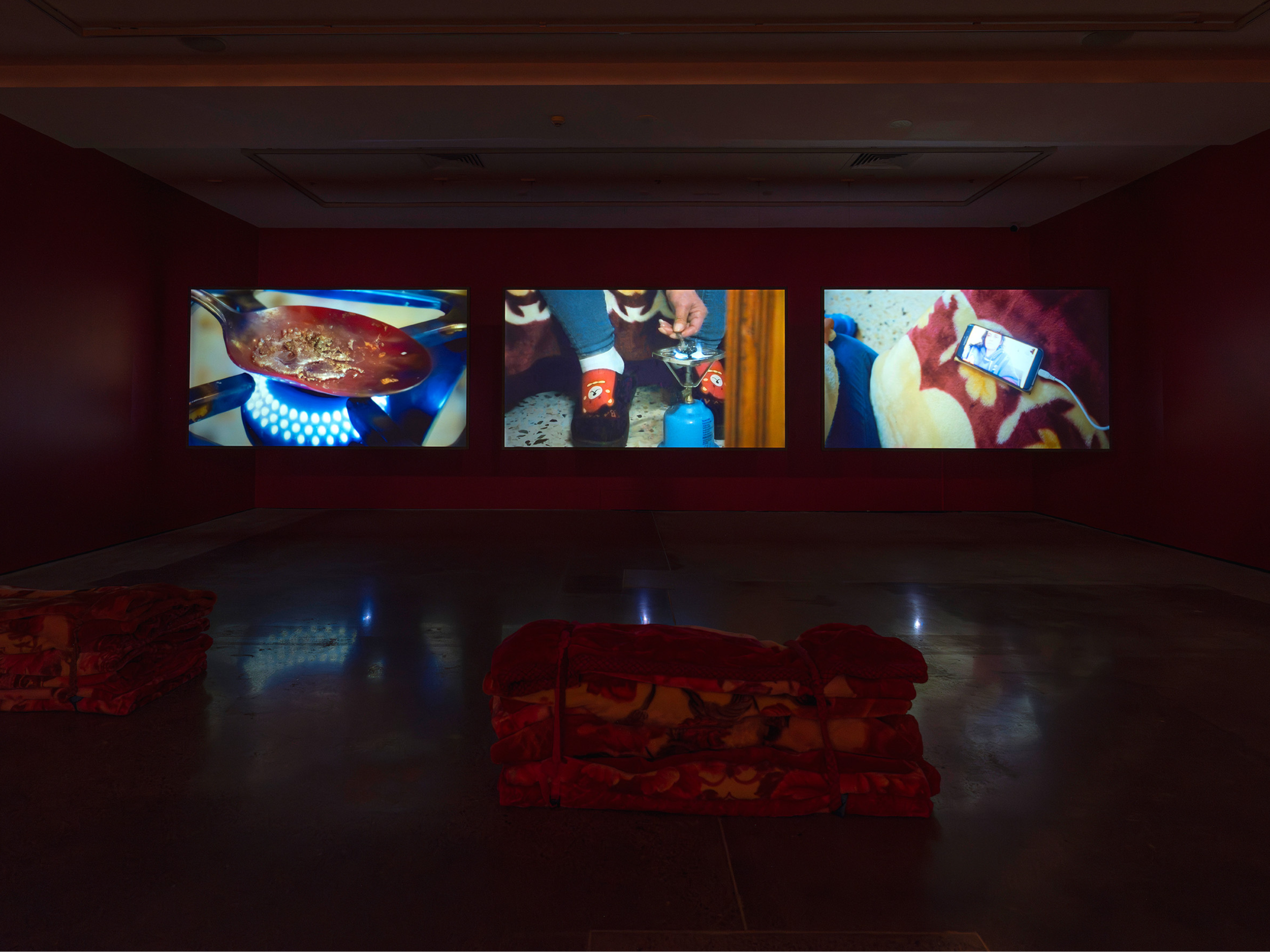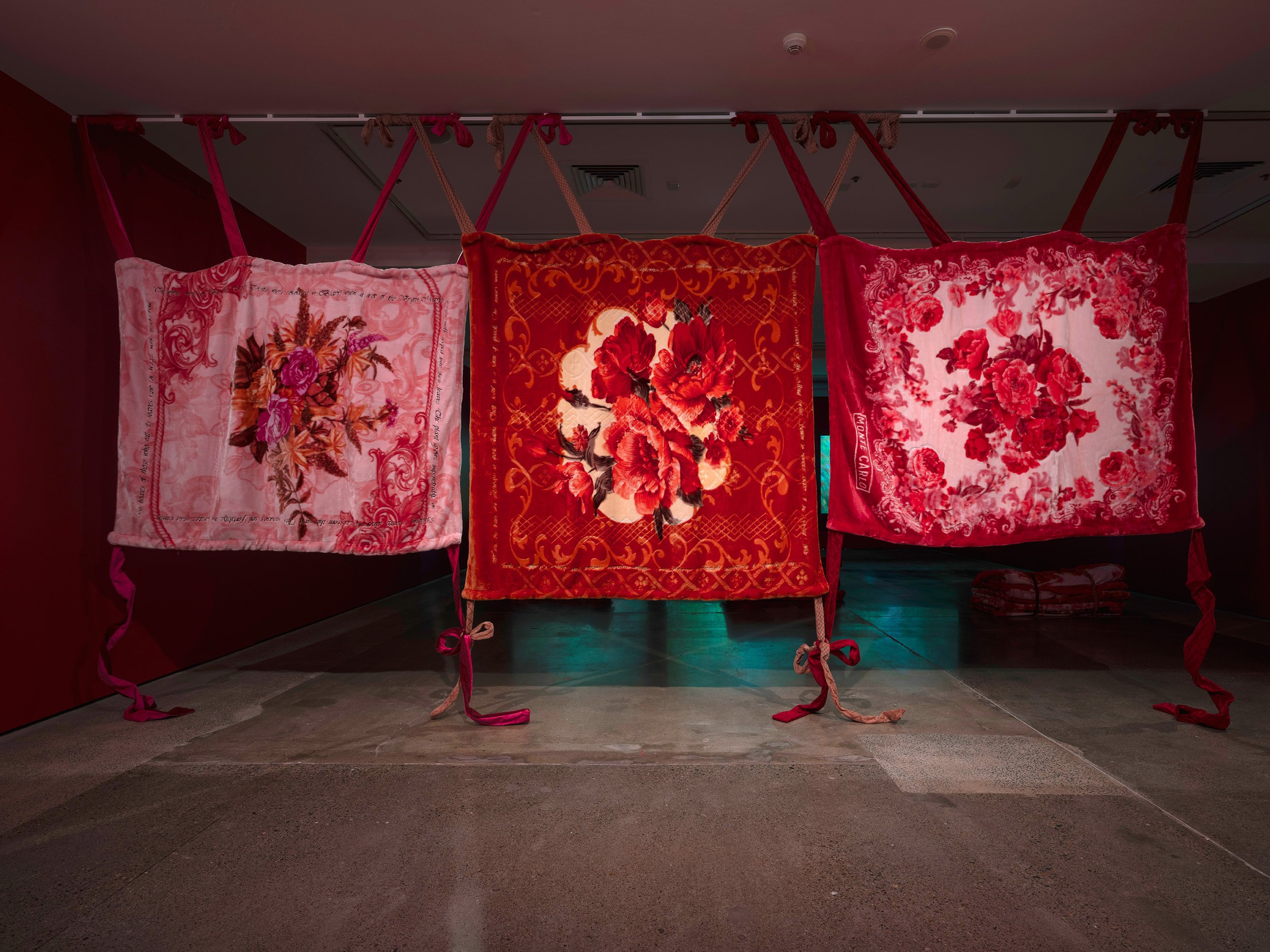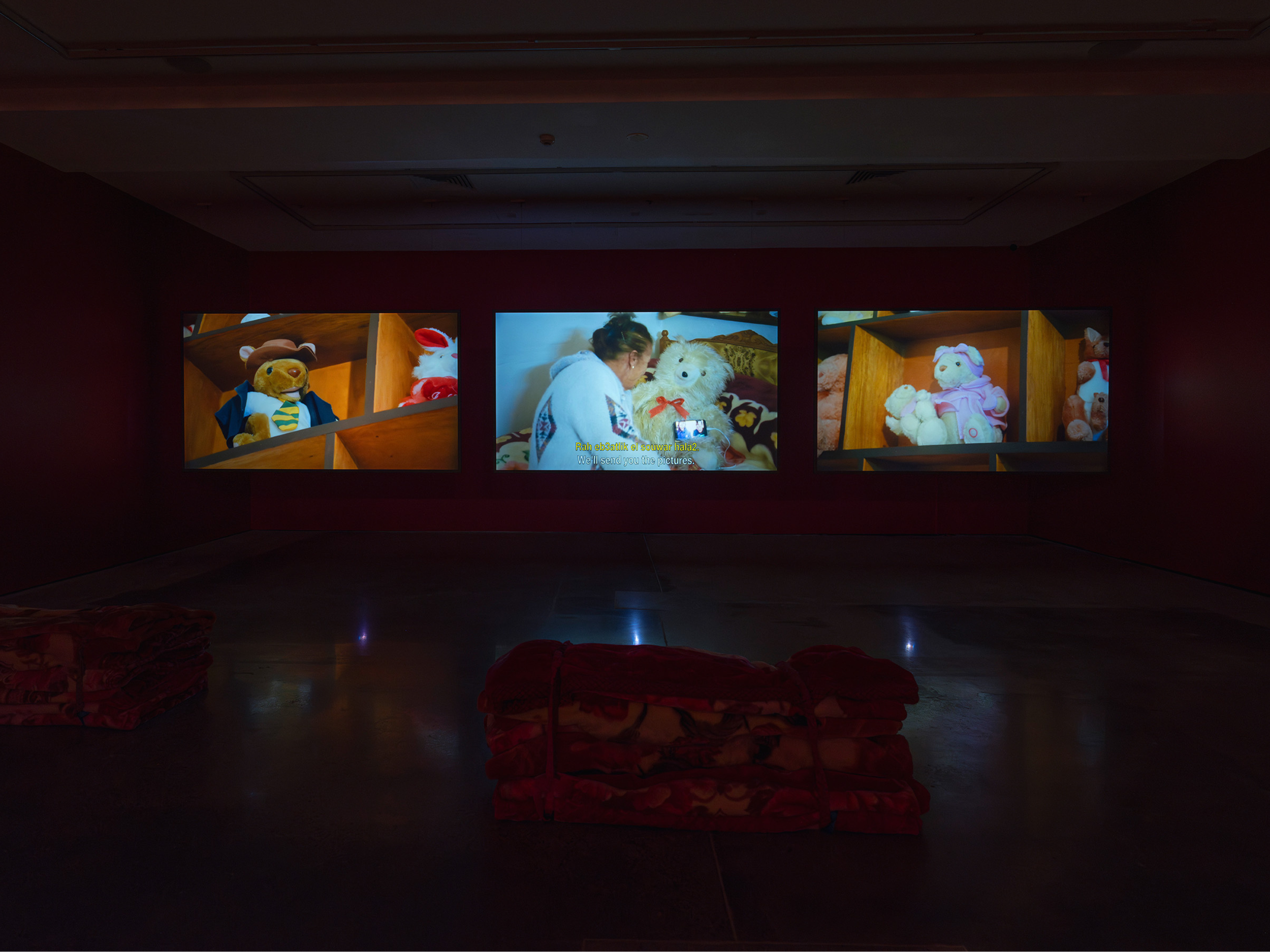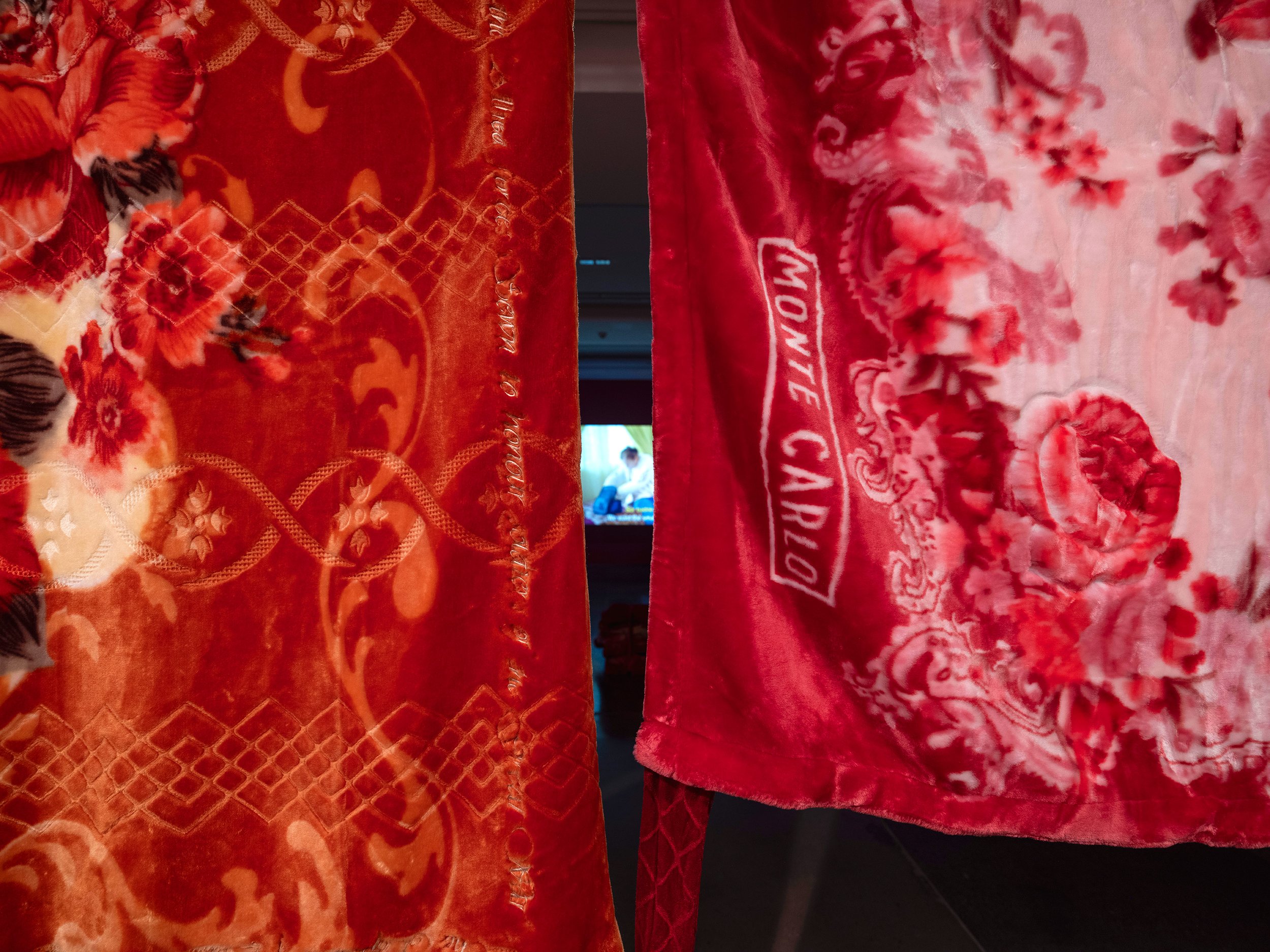Justine Youssef: ‘Somewhat Eternal’ at the Institute of Modern Art
/A parsley stem is placed over a Samsung mobile phone displaying an image of a pillow resting on a bed; detached from location and absent of body, the ritual endures.
This poetic action and hauntingly absent frame, captured in Darug/Sydney based artist Justine Youssef’s three-channel video work exhibited as part of the multi-sensory installation Somewhat Eternal (2023) at the Institute of Modern Art (IMA) in Meanjin/Brisbane, is a stark and timely echo of the ongoing impacts of colonialism. Somewhat Eternal grapples with questions concerning the displacement and attempted erasure of distinct global communities and the lasting effects this can have on diaspora peoples’ connections to their homelands.
Filmed in Lebanon, a multi-channel video work formulates the central focus of Somewhat Eternal. The video follows Youssef’s aunt performing R’sasa, an alchemic practice intended to ward off the evil eye in the pursuit of healing and repair from ailments and misfortunes. Due to their embodied knowledge of local ecologies, R’sasa has been practiced and sustained by generations of Youssef’s family, despite famine and military occupation. Reprised here, a mobile phone and WhatsApp video call become mediators of hybridity, enabling the ritual with parsley, water, lead and body to be shared, despite being fragmented and altered so as to traverse geographies. An uncannily familiar interaction for many migrant, refugee and Indigenous families who have formed an immediacy with the virtual to chart cartographies of the self despite, and within, the complexities of colonisation, globalisation and localisation. The persistence and resilience of Indigenous cultures to adapt to this networked connection stands in contestation to the changing cultural landscape and continues to press toward the decomposition of colonial power.
Filigree and embroidered text border the walls and suspended rose blankets rest in both gallery spaces. As our movement reveals the haunting histories contained in this text, we learn that the lead in R’sasa is reclaimed from the ammunition remains of AK-47 guns supplied by Australian weapons exports to Israel during their invasion of Lebanon between 1982 to 2000. A horrifying, yet unsurprising, parallel of our nation’s complicit action in upholding and promoting Israel’s illegal occupation of Palestinian land and genocidal practices against Indigenous communities both in Palestine and on our own soil, with police brutality and increasing black deaths in custody an enduring source of national shame.
Truth-telling is embodied in Youssef's exhibition, framed by object, relation and ritual, to supersede the reductive and bias accounts of history found in western archives. A subtle perfume distilled from blessed milk thistle, burnet rose, Damask rose and Lebanese cedar permeates from the blanket textiles located throughout the gallery. This complex blend of aromatics is brought together by histories of land subjugation and occupation, while balancing aspirations for renewal through resilience. The scent acts as a surrogate body, reflecting adaptations to conduit bodies as dates feed displaced Palestinian babies instead of their mother’s milk.
The cardinal coloured and hydrosols steeped gallery offers a space in which to build solidarity in this time of crisis. Through Youssef’s work of cultural persistence and resistance, we are urged to sustain each other in our collective education, protest and demand for the end of the siege on Gaza, and annihilating attacks on Rafah.
As the photograph of Youssef’s pillow is laid on the bed with the parsley stem, we see in the video that her aunt ensures the phone is placed on charge as it rests overnight. This common gesture becomes a poignant commitment towards cultural endurance and forges it as somewhat eternal. These virtual formations facilitate and transform the possibilities for diaspora affiliation and aversion to colonial regimes. Affirming an inherent belonging with their homelands across oceans, land and networks. Somewhat Eternal asks us to consider how we might sustain solidarity and actively seek alternative futures that break our acquiescence to the creation of displacement.
Georgia Hayward, Meanjin/Brisbane
Curated by Stella Rosa McDonald, Tulleah Pearce and Patrice Sharkey, ‘Somewhat Eternal’ is on display at the Institute of Modern Art until 7 April 2024.






















